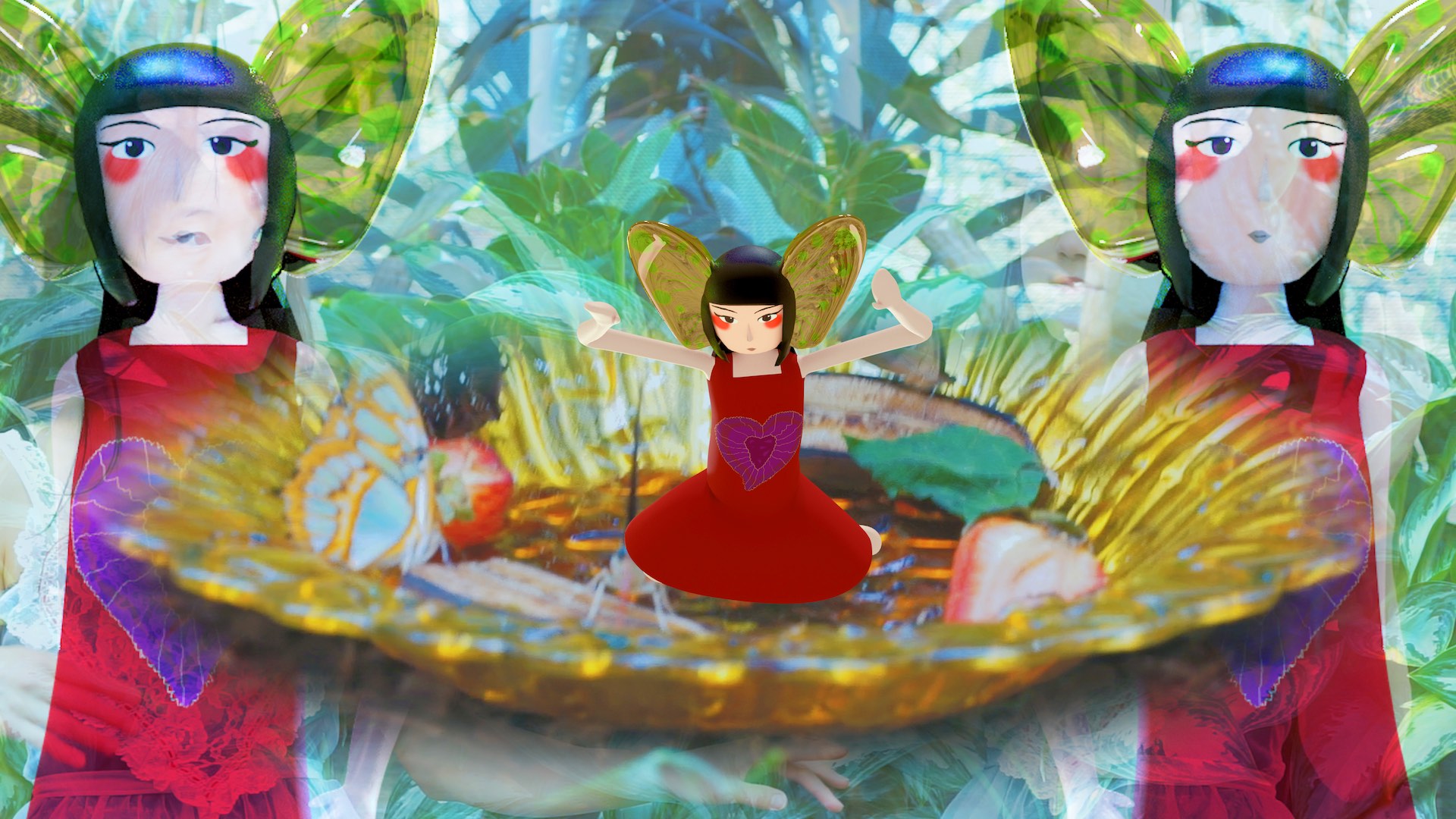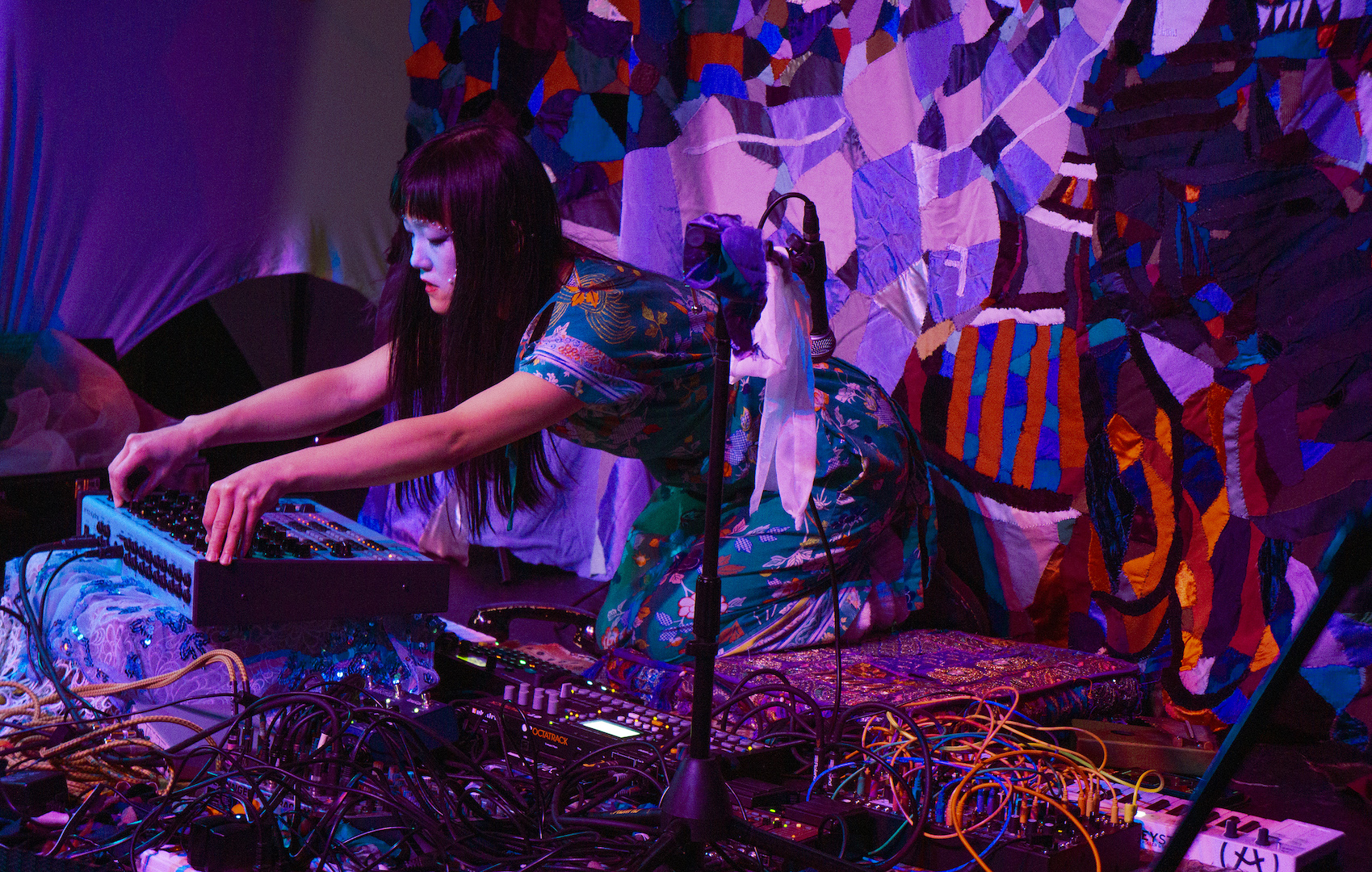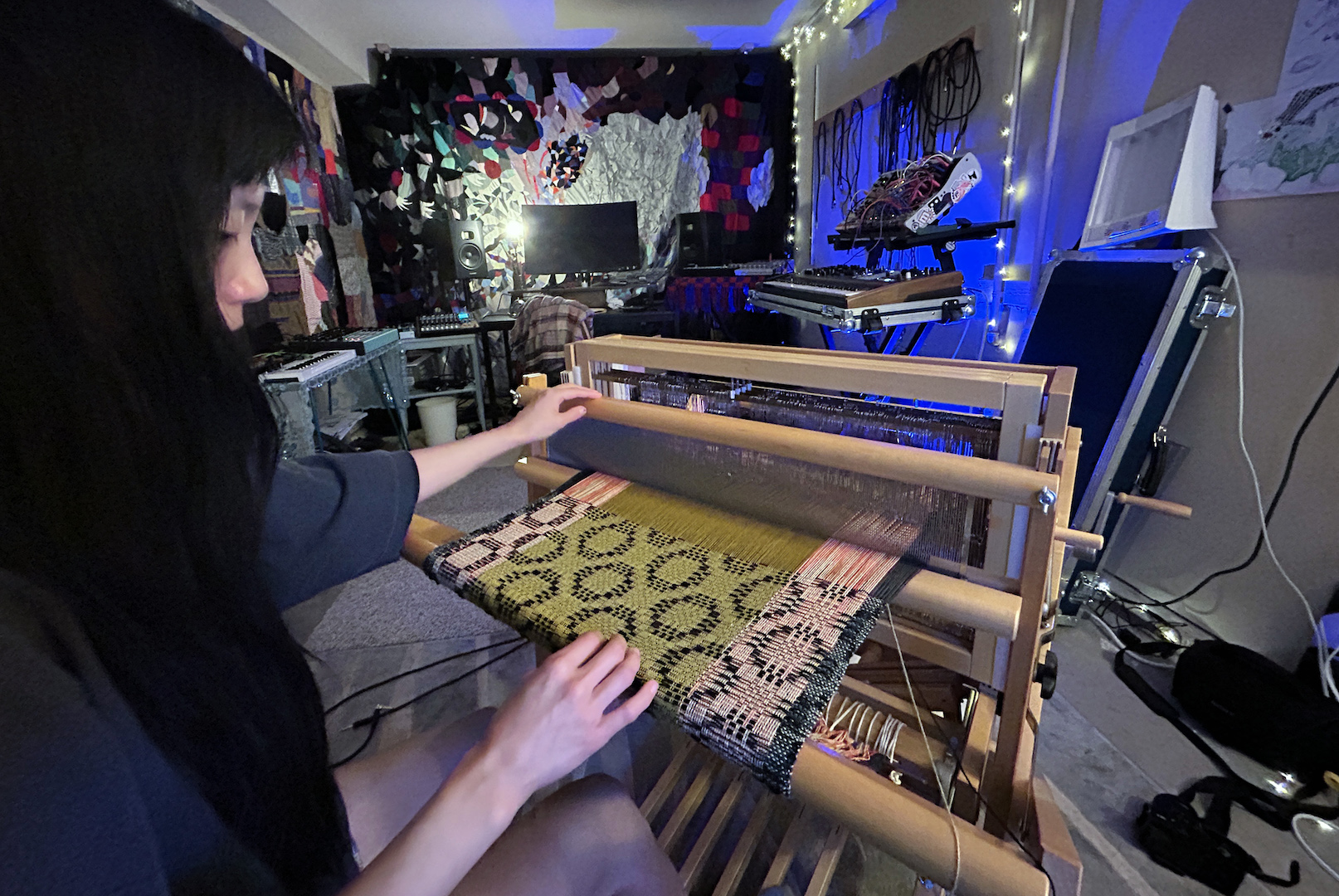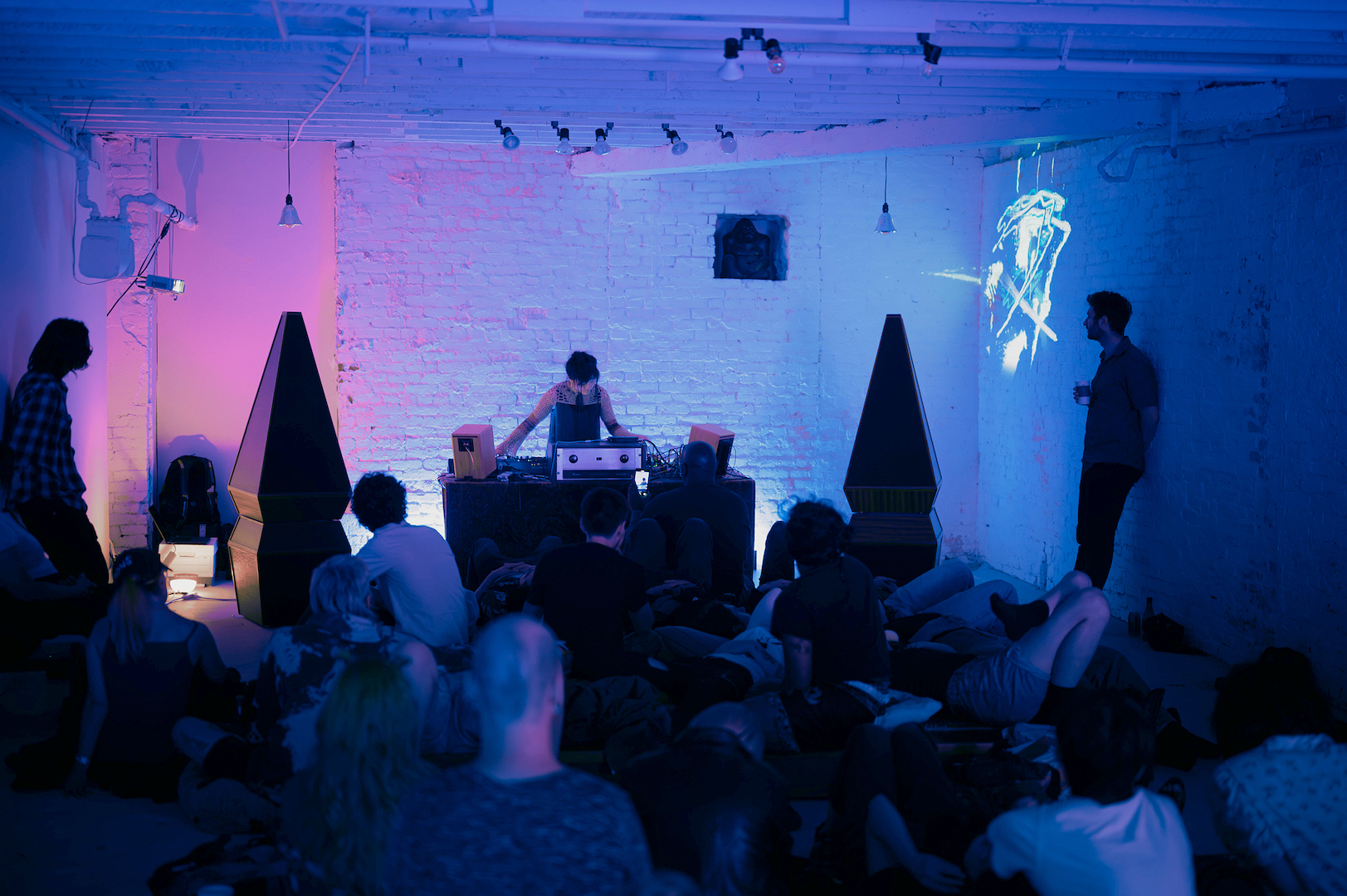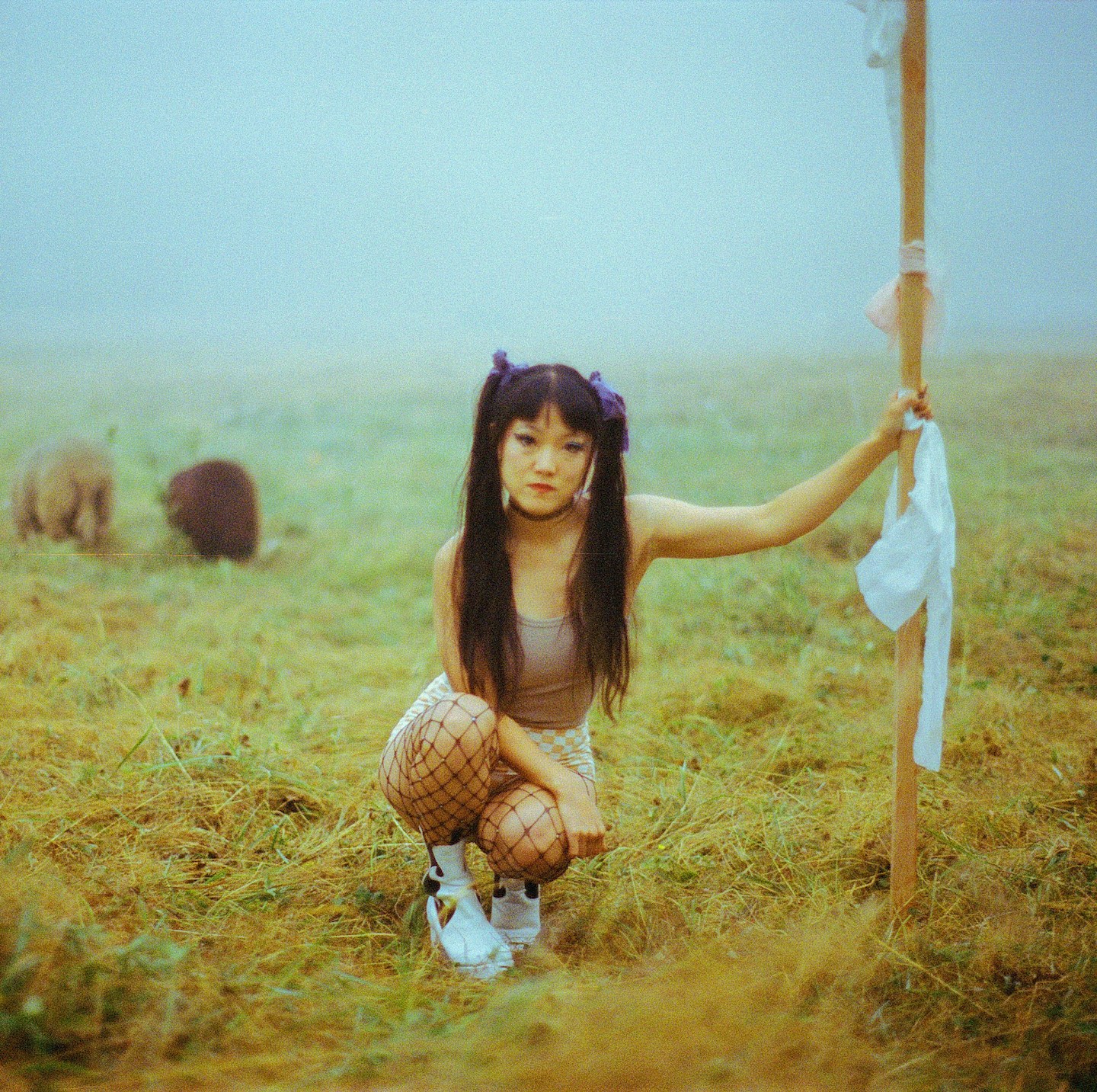
Dream Weaver: The Otherworldly Music Of Seattle Producer enereph
by Dave Segal
photo: Twyla Sampaco
Amid the dozens of oblivious customers playing pinball and pool at Seattle's 4Bs Tavern on a Tuesday night in July, something extraordinary and unexpected was happening. Enereph (31-year-old electronic musician and Patchwerks employee Connie Fu) was flaunting sound design as complex and unconventional as '90s-era Photek. Her merciless, unpredictable beats flitted and pummeled with scientific rigor. Her sound was perfectly poised between physicality and braininess.
Against the odds, enereph's music cut through the clamor at this monthly showcase headed by Matt “EZBOT” Piecora with a distinctiveness that made me think that one day she would laugh at these ludicrous circumstances, as she prepares to take the stage in the near future at the sort of prestigious festival that gets covered in publications such as The Wire.
The journey to enereph's current status as a musical force on the verge of underground notoriety is both typical and atypical. As Fu was growing up in the Detroit suburb of Northville, her parents enrolled her in piano lessons taught by Ukrainian instructor Isabella Vilensky. From age 5 to 15, Fu learned how to play works by Mozart, Beethoven, Chopin, and Mendelssohn. She competed often and participated in an annual Michigan Music Teachers Association achievement test. But she didn't really think of herself as a musician, but rather “as a person who was playing piano,” she says in an interview.
As a youngster, one of Fu's favorite songs was Shakira's “Whenever, Wherever,” to which she would often sing. “I was really into random pop music. But as a kid growing up in suburban Michigan, I wasn't exposed to a whole lot of music. My parents are also immigrants. What they played at home was essentially Celine Dion and a selection of Chinese folk songs. It was quite a weird mix. Between classical piano repertoire, mainstream pop, and songs of my parents’ youth, which I had little context for, I found it really difficult to grasp the concept of music.”
It wasn't until Fu started studying visual art and art history at Harvard, that she discovered her true path to becoming a musician. A class devoted to Surrealism Between The Two World Wars drew her into an obsession with art history. This led to Fu engaging in painting, installation art, and performance art while at Pratt Institute in Brooklyn. “I began scoring my performances. That's how I found my way back to music—specifically electronic music and scenic music through this concept of writing an accompaniment or sonic expression of what I was doing in physical space.”
Fu's interest in electronic music was further sparked when, during her first stint in Seattle, a friend introduced her to the blog Listen To This, about out-of-print records, many in the ambient and New Age genres. There she encountered Hiroshi Yoshimura's Wet Land, which remains one of her favorite albums. “It's a super-iconic ambient album.”
When prodded to offer other inspirations, Fu says Meredith Monk. “It's mostly about the way she weaves together materials and mediums to discover new modes of perception."
“I'm drawn to art that comes at you multifaceted, as a force. You have to reckon with that force with your whole being, and that attention breeds deep listening and observation. Looking closely at things reveals how incongruous they are, and that is a huge source of inspiration for me.”
While attending grad school in New York, Fu often frequented a club called BASEMENT by herself. “I didn't know what I was going to experience, necessarily, and didn't have anybody to share it with; I was sort of a fly on the wall, inserting myself into the situation where it's very dark and dungeon-y and hazy. [BASEMENT is] in what used to be a glass and steel-frame door factory. So there were all these nooks and crannies full of crumbling brick. It would be all red and dark, and I listened to a lot of techno there.
“Those are some pretty transformative experiences, too, because I felt like there was a heartbeat of the world going on. That along with the beautiful, open expanse of ambient music, those extremes drew me to start producing electronic music... In a way, they are two sides of the same feeling—this extremely transcendent feeling but also a very rooted feeling.” Seeing hardware-based techno artist Headless Horseman perform at BASEMENT “was pretty influential as well—the whole outfit, with the black fringe and the face... it's like this very mysterious character.”
Artists such as Headless Horseman made Fu ponder the notion of her persona. “I haven't always been a forward person with aspects of my personality. And I feel connected with artists whose personas are more subtle. Almost like the lack of persona is the persona—in a general sense, there is mystery. But there are many ways to shape that mystique and mystery. On the level of persona I was drawn to electronic music because it felt like an easier realm to live in than that of rock and pop stars.”
Enereph's early recordings already revealed promise. The 2020 track “Andromeda” is abstract techno full of tantalizing textures and spluttering beats, as if she conceived a banger for the club and then decided to make disorientation more important than danceability. Co-written with John Nap and Jonathan Christ, “Spiral Is The Way” combines pastel, gossamer ambient pop with intricate drum & bass and then ends with a lament/chant coda. “As A Point” continues enereph's journey into nimble, featherweight drum & bass, enhanced by her own diaphanous vocals. The chilling, emotive ambient of “Reinvention” evokes Brian Eno circa Another Green World.
Reminiscent of Moebius' solo work, “clamorseeking” is a methodical, creeping, and bleeping piece that makes you feel as if a terrifying amphibian is sneaking up on you. More peculiarities ensue in a demonstration of enereph's most idiosyncratic production tendencies. This collage establishes her as a formidable experimental musician.
The World Unfound EP from 2020 represents some of enereph's most adventurous music, “New Chapter” brings dystopian sci-fi-flick terror fuel while “Hymn” offers a delicate, melismatic vocal intro into which come hard, spaced-out beats and “steel poles dropped on the factory floor” ambience. The track exemplifies enereph's stunning contrast between beauty and brutality. “Morning” classical-influenced IDM, shimmeringly oneiric and disorienting in equal measure while “Tomorrow” purveys desolate, forlorn ambient in the vein of Tonto's Expanding Head Band's “Tama” (with dreamy vocals à la Seefeel's Sarah Peacock), getting more turbulent as it goes. World Unfound was the first electronic music enereph released. “From start to finish, I was terrified. [laughs] So maybe that's why it sounds so dystopian. This is literally how I feel making this and releasing it right now. It was a huge milestone, because of the vulnerability of it all made it so scary. Making music is way more vulnerable than learning repertoire.
“Well, not to hierarchize it—they're scary in different ways. Stage fright is something I struggle with, so it felt important to take that walk from the innards of my soul, which, at the time, were kind of tattered.
“I was in my mid 20s and processing a lot. To take that walk through the wintry hinterland of the soul out into releasing that piece was really important.”
The forthcoming album music for weavers—which is projected for a 2023 release—shows growing confidence and skill levels in enereph's production. The opening cut “undressing” is a red herring: it's pensive ambient embellished with Grace Scheele's mesmerizing harp playing. After this, things swerve into much more rhythmic territory. “Drift toward” glories in the aquatic-/space-funk realm redolent of electro psychonauts such as Jedi Knights and Drexciya. “In december” and “rabbit bounce” embrace bruising, complex IDM that roils in hyper-modern sci-fi milieus.
Though a rhythmic brutality runs through enereph's songs, they also possess an erotic aura. Throughout music for weavers, enereph excels at creating depth and dimensionality in her songs. She generates a striking contrast between vaporous melodies and rugged beats and bass frequencies. Enereph's newest track “meant to be,” part of Delusional Records’ second anniversary compilation which also features tracks by Trovarsi, DateNite, Aria Bare, and Vutall, is swoon-inducing electro/R&B with Fu confidentially cooing the refrain, “life is better when you feel it.” Listeners may hear similarities with recent output by fellow Seattle producer Lusine.
“I'm working on some weavings right now and I'm getting into the family of patterns that go by the name 'overshot,' which is distinctly American family of patterns. With overshot, the weaver can create intricate patterns using a relatively simple loom. You can create all of these wonderful curved lines and patterns that seem intricate, but when you look closely at them, they're just little square blocks arranged in different ways. So it's like you're looking at pixels, but you're looking at a weaving. There are infinite variations. I appreciate how inexhaustible the pattern-making field is—expressed both through textiles and through music. I'd like to incorporate overshot patterns in the visual accompaniment to music for weavers.”
“I've also been thinking more about the music being the sonic expression of the loom, a score-writing instrument. If I were more of a literalist I'd call myself out for that, because really I was trying to make some dance music and didn't quite make what I set out to do. Maybe the connection to the loom is there, too, in that the relationship of human to machine is never as seamless as one imagines. I set out to do something and discovered I was much more interested in another idea that only faintly related to the first one. Or it was some kind of new pool of thought only revealed to me by embarking on the first idea.
“It's all connected to me wanting to make dance music, but feeling quite separate from club and DJ culture. I've had meaningful times at clubs, but the most meaningful times I've experienced alone.”
Fu is at the stage of her creative life where she's trying to figure out how her studio work relates to what she chooses to perform live. I ask her if she views her music in the context of functionality and if so, what is it useful for? At the time of our interview, Fu was working on music for weavers, but says, “It's not like I'm writing the music to carry out the function of being listened to while people weave at the loom. But if there were a character in a story with that concept, that's the picture I’m more interested in capturing. It's not literal; it's purely conceptual.
“Whenever I sit at the loom, I remember how very piano-like it is. It's a mechanical instrument with many intricate parts. You sit on a bench facing it and there are pedals and a horizontal bar with a metal comb that threads come through. You beat the bar forward to situate every row, and that's how your cloth builds, row by row.”
“I'm toying with this idea that the loom is an instrument that I'm playing, which is essentially silent, but the music it would make is the music that I'm writing. It makes fabric that's almost like a score. What would the musical output of something like the loom sound like?”
Fu says that her new music is “connected to the idea of [Madrona Labs' software synthesizer] Kaivo, which is why these days I've been spending my time either playing the piano or mixing these tracks, which are kind of rhythmic. I kind of wanted to make dance tracks, but I don't necessarily know that they would be played in a club context. “It's more like, the rhythms are a driving force in the way that weaving a cloth would be. It's a driving force to create something, but your body is actually not free in its movements. Your body is the one driving the force, so you're not necessarily the one dancing; you're more the person producing the rhythms. How does the person producing the rhythms also dance?
“This is why I find it hard to identify fully as a musician; these are thoughts that don't feel like they fit into a musical genre or tradition. They exist as a body of thought.” And that's what makes enereph's music interesting: It's not beholden to any genre or tradition. Its elusiveness is its strength.
Speaking of Madrona Labs, Fu discovered the company during the pandemic via a Discord server from her friend Aaron Turner (aka British producer/instructor kk junker). The subject of Kaivo arose in a channel for instruments and plugins; Fu clicked on the link and bought it soon after. At that point, living in an isolated, tiny house in Poulsbo, Washington, she was using an Elektron Octatrack, a Korg Minilogue, and her computer. She had moved from Cleveland and decided to record an album by herself. Having no community or scene to nourish her, she felt confused and depressed. The album wasn't coming together.
“When I found Kaivo, it was like, this is maybe a harbinger of what's to come; it's semi-modular, it's interesting. Conceptually, it's so inspiring. There are a lot of plugins that are emulating things that exist in the real world, whereas Kaivo comes right out the gate and says, 'This instrument is something that you cannot find in acoustic instruments.' Literally, you're taking a granular synthesizer and you're giving it a physical body and resonant material. It doesn’t exist outside of software and that’s why you should use it. That's super-compelling as a musician. In this sea of thousands of plugins, I could be completely broke if I bought all of the plugins that I wanted. But this is one that I can't not have. Because it's using the medium of software to produce sound that you can't otherwise do.
“What Randy Jones is doing is awesome. And [with Madrona Labs] being based in Seattle, I was feeling a connection. Things that are made in particular places are a product of those places and are inextricably tied to them. Even if it's software and anyone around the world can get it, and it functions just as well and you can contact Randy for support and there's an online community, so it doesn't matter where you are, it still feels meaningful to me that somebody in Seattle made it.
“Seattle is bursting with musical history, so it makes sense.”
“I've only been here cumulatively five years, but it's the longest time I've spent in any place other than [in Northville]. I have this infernal conflict: It's very hard to live here, in many ways. But there are certain things that keep me feeling like there's still something here. Like Madrona Labs being here, Valhalla DSP being here, or various module makers, or very niche music communities overlapping. They make me feel like this is a place where I can still subsist, despite X, Y, and Z.”
Fu is currently working on a film photography project with collaborator Twyla Sampaco, funded by 4Culture, which will eventually be presented publicly with musical accompaniment. It's part of her masterplan to integrate visual art and music (she's also a teaching artist at Frye Museum). “Most of these tracks are tied to specific places. For one of them, I went to Golden Gardens at night and recorded the waves. For another, I did this Kaivo recording where I sampled and resampled the output of Kaivo—ran it back into itself many times—so some very warbled vocals came out. Then I did mushrooms and listened to it and thought, 'This is really interesting.' Afterwards, I still liked it, which was amazing.
“Where that happened was in a little cabin in Bow-Edison. I kind of want to do a photo diary situation where this character that's not quite human, not quite sheep, not quite anything, and is sort of faceless, is in these different locations, living a parallel life to what I live in Seattle—but not quite the same.”
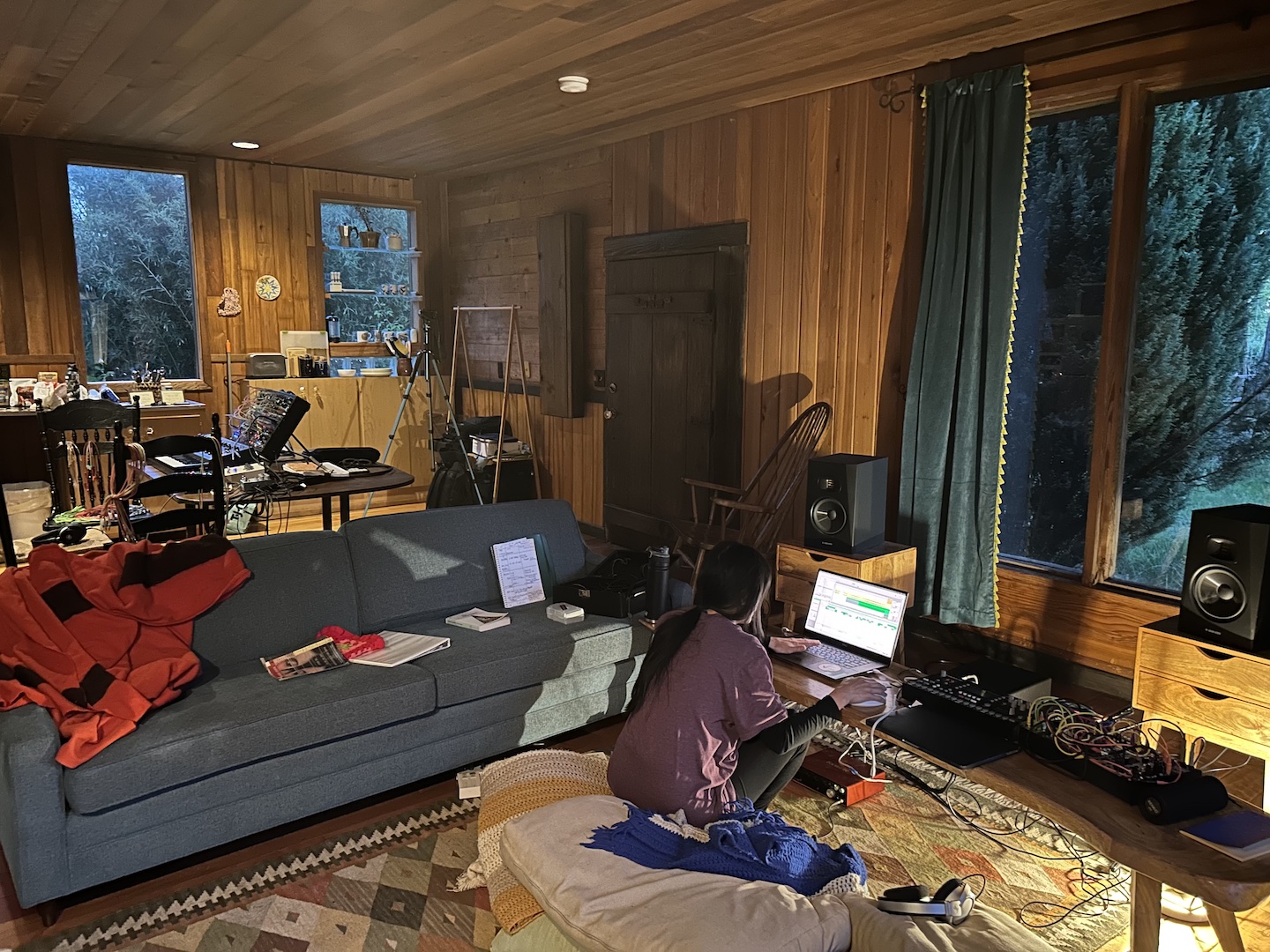
Although Fu is a distinct minority as a woman of color in the Northwest's electronic-music scene, she doesn't like to dwell on obstacles or challenges she's faced due to that. Seattle, she says, has provided her ample opportunities to perform as well as support from various communities. The barriers she feels more sharply are those imposed on her from within.
“The internal lack of confidence, lack of self-worth, or feeling that there's so much happening, why would my contribution matter? That's the stuff I struggle with over time, but I'm starting to be able to see past a little bit more now. But it's only because I've allowed myself to continually make things.
“And now that I have a substantial enough body of work, any time I start to feel that way again or feel really frustrated with myself, I can point myself back to those places and say 'Hey, it's not that you're trying to do this; you have been doing it a long time.' There's momentum, so it's okay, is what I'll say to myself.
“I don't see a ton of other people who are like me in terms of background in the electronic-music community, but then again I do: Everybody is such an individual, and yet I meet and connect with people over one thing or another all the time. I have a lot of hope because I've experienced such amazing opportunities here.
“I want to be a steward of more people to feel that way, to feel confident and like they belong. That's the most important thing.”
“I've been listening to Jlin a lot recently and am inspired to push myself to develop further and deeper in composition. Jlin says in an interview in Electronic Beats that 98% of music making is not music-related, but about figuring out who you are as a person. That resonates with me a lot right now as I find myself fighting to craft a voice that I can firmly stand with.”
https://www.patchwerks.com/
https://enereph.bandcamp.com/
https://enereph.com/
